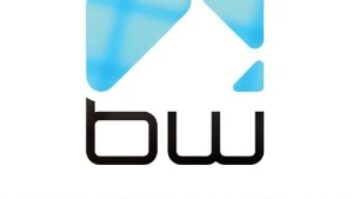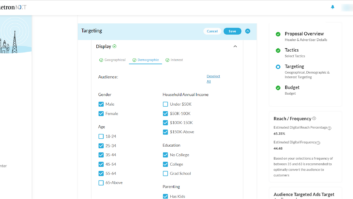A forgotten password or a full mail folder may not seem serious, but if it keeps the material off-line when you need it on, it is almost the same as dead air.
In the days of analog recording, routine maintenance for tape machines and other studio gear was a must; and emergency plans were straightforward. As broadcast has turned digital, more and more information technology equipment and software has been integrated into the facility.
Unfortunately, evolving IT techniques for managing the facility are less well known, at a time when facilities are taking on much more expanded and complex tasks. This article attempts to address this blind spot by focusing on one possible approach to the problem, IT Service Management.
(click thumbnail)
Uncertainties The promises of the digital age of broadcast have been delivered somewhat unevenly, and not just because of the slow introduction of digital TV.
The hardware for PC-based recorders is certainly cheaper than professional tape machines, but expensive software, computer personnel and training are just some of the areas where the gains are frittered away. Early optimism noted that electrons don’t wear out; however, hard drives do. Replacement of tape heads was a planned expense, but upgrading PCs, operating systems and software versions is often ignored until too late; while the components, configuration and maintenance that assure PC multimedia high quality are frequently given short-shrift.
Merging broadcast systems with the desktop and portables has brought new uncertainties regarding the effects of viruses, network breakdowns, problems in remote access and other IT issues to play in on-air delivery. Problems with a forgotten password, slow hotel Internet access or a full mail folder may not seem serious compared to an erased interview or poor recording quality, but if they keep the material off-line when you need it on, it is almost the same as dead air. Additionally, the steady mounting effect of these problems has a large effect on facility operations.
IT Service Management can help to bridge the digital divide in the studio by organizing the procedures and processes into intuitive areas. While properly assigning expectations, it not so much decreases complexity as places it into proper categories. From there, the level of detail required depends on the organization.
Tasks and tools
An example can be taken from Service Support.
A typical call to a Help Desk might note that an audio station is not seeing the network. As an Incident, the priority is to get the station back to a usable state quickly, while as a Problem, the priority will be to find out the exact reason the station stopped functioning.
The two roles may be provided at the same time by the same person (e.g. you find the network cable is bad and replace it), while a quick Incident fix might be using a floppy for file transfer or rolling in a spare recording station and research the Problem later. Both roles will rely to some extent on Configuration (such as equipment, software versions and settings) as well as Change (typically what has changed most recently).
Similarly, Change and Configuration work closely together. Changes to equipment and software cannot be made willy-nilly without negatively affecting the facility. Without a proper record of changes (Configuration), carefully implemented changes can still be misunderstood or unnoticed by new staff, paving the way for a future disaster. Release Management complements these two by trying to roll out Change to a number of subsystems in a pre-tested, orderly fashion, rather than haphazard or emergency changes to individual software or machines.
While this is a simplified view of these roles, it is obvious that a great amount of record keeping and communication is required to do ITSM right. This should not scare off the small facility, where frequently multiple roles fall on one person, nor should it be an excuse for doing nothing. There are tools available to help. Numerous payware and open source packages are available for organizing trouble tickets and change records (e.g., ZenTrack and dotProject) even when maintained by one person. Though a regularly maintained spreadsheet or mailboxes can be searched quickly on a PC, typically this approach prevents the better communication that the other systems provide, including informing management. In any case, the best of systems will do nothing if information is not entered regularly.
One of the areas IT Service Management helps in is defining IT as a black box with various inputs, outputs and features and costs. Upper-level managers may be out of touch with technical issues, so placing approximate figures on down time, repair costs, numbers of incidents and other issues allows management to order its functional and budgetary priorities. At its best, this can be defined in terms of Service Level Agreements (SLAs) equivalent to those used for outsourcing services.
The word “outsourcing” should not make staff unduly paranoid; if an in-house staff can provide a well-defined cost-center interface to the company, the services stand less chance of needing to be outsourced unless it makes overwhelming sense to do so. More typical is that management hears marketing hype about outsourcing savings and has few metrics as to its in-house IT effectiveness. IT Service Management can help identify areas where true efficiencies and cost savings really can be had, through outsourcing, specialized systems or changes in procedure, rather than relying on guesswork.
Some of the areas for which SLAs can be drawn up include costs (Financial), resource design (Capacity), deployment and management of resources (Availability), and recovery and contingency planning (Continuity). Properly planning usage and growth is essential for assuring the facility’s Capacity in different areas, while if maintenance keeps Availability off-line, the planning is useless. Every support person would love to have unlimited storage and 24×7 maintenance agreements, but not every station can afford these. Emergency planning (Continuity) can range from a set of emergency tapes to full off-site facilities, depending on the budget and need.
More support
All of these IT Support areas need to be tied into the company’s Business Model and a Risk Management evaluation to set the higher-level priorities. These requirements trickle down to lower-level issues.
If a station has a single on-air audio server, maintenance on that machine has to be planned much more carefully than to desktop stations. A station that’s funded by advertising revenues may need to be back on air much faster than a non-profit station. Even such considerations as whether the broadcast is the Olympics or a late night tele-shopping may enter into the equation.
Risk Management is a field all to itself and ranks costs, probability and severity on a number of criteria, including costs of doing nothing vs. other alternatives. It also evaluates sometimes-hard-to-quantify costs such as good or bad PR, effect on the future potential of the company to expand or perform, alternate uses of IT money and so on.
Alongside Risk Management is facility Security. Besides traditional concerns such as fire and power outages, the new IT-enhanced facility has to worry about viruses, hackers, spam, more complicated Digital Rights Management issues and other threats that affect both program acquisition and transmission. The basic Security triangle includes Confidentiality, Integrity and Availability, and balances protection mechanisms with the cost, the likelihood of the threat and its severity. Security is an issue in both Service Delivery (e.g., it assigns and monitors Continuity and Availability goals) and Support (it assures Incident and Problem procedures fit the facility’s Business Plan and resource constraints).
While this article has focused on providing a general sketch of IT Service Management, next time we will dig into the different areas of ITSM along with practical applications for the broadcast industry.
This article is based on a paper presented at the Broadcast Engineering Conference at NAB2005. Reach the author at [email protected].













